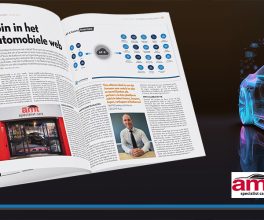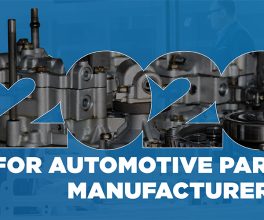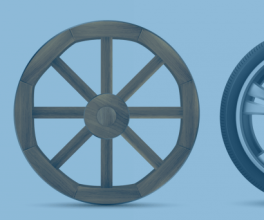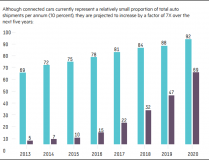As per a recent report, “The global automotive aftermarket size was valued at USD 378.4 billion in 2019 and is expected to grow at a compound annual growth rate (CAGR) of 4.0% from 2020 to 2027.” That being said, these numbers portray the scale of growth and hence, the potential of the automotive aftermarket industry. The automotive parts sector forms a major chunk of this, and it would not be an understatement to say that the future of the parts industry rides on Digital Transformation.
Parts Aftermarket Sellers/Groups Industry
With the advent of technology on a day to day basis, the conventional methods of operation are becoming outdated. Since the parts industry has a specifically large number of stakeholders and variations, it’s imperative to leverage technology to make operations simplified and hence, smoother. However, the growth curve that we are talking about would be mainly depending on the industry dynamics mentioned below:
- Business model: A shift towards proprietary channels and partnerships is expected, especially in the e-commerce businesses and workshops sector.
- Products and Services: Services and diagnostics are expected to grow about 3% faster than the wear-and-tear and crash-relevant parts. Digital-related revenues will triple to a share in sales of almost 20%.
Online Sales – Parts E-Commerce – Backbone of Independent aftermarket
Parts Companies need to implement best practices into their online sales channels to get higher revenues. The best way to achieve this is to have a multi-channel offering, i.e. tailor their products and channel strategy offerings as per the target segment and need. It can be achieved by analyzing the customer buying patterns, sentiment analysis using Business Intelligence and Analytics tools.
Some service providers might offer different pricing to different customers, sell the same product at different cost at different geo-locations considering factors like demand, logistic cost, etc. There should be consistency in the product description according to the customers it targets and Product Identification Number to provide precise service to the customers.
PIM – Why is it important?
Today Parts Manufacturing or Selling companies are implementing multiple strategies to increase their growth. To stay afloat in the competitive market, organizations need to evolve in terms of internal processes and customer handling continuously. This practice aims to provide excellent service to the customer by providing accurate and well-detailed descriptions. To provide precise and persistent information to the customers, organizational IT systems deploy PIM or Product Information Management.
PIM is widely used by independent parts suppliers and manufacturers to map their products with their competitors’ products and TecDoc. It also maps the same product with different product numbers while being used in different geo-locations. PIM enables organizations to reduce management chaos due to data format as per the Tecdoc format so that their products can be easily uploaded on TecDoc. Now the question arises about the inventory of these products. PIM resolves this dilemma as it is integrated with the E-Commerce Webshops and the ERP where the stock is maintained, and price calculation of the products is done so that the customers are provided with consistent stock and price information.
Internally PIM manages products according to the products group. However, it also bifurcates/maps products according to the subgroups. PIM allows multiple teams to work together instead of working on silos for the same organizational ambition. It does that by providing role-based access to teams and with validation flows, for instance, bundling of the tools.
AF Parts Commerce Solution
The combination of PIM being able to manage the backend and E-Commerce multi-channel platforms provides visibility. It also acts as a touchpoint with customers and analyzes the buying patterns, customer service, return rate using Business Intelligence while the Analytic tools provide all-around help which the organizations need to excel and achieve their goals.
With the changing dynamics of the automotive industry, the parts sector would expand faster than ever. Operational efficiency needs to be enhanced to maximize profits. As automobiles become smarter with more and more chips and sensors, the aftermarket sector has to undergo digitization to keep up. The higher efficiency and increased profit margins would ultimately result in better customer experience as the costs would be directed towards better R&D and other services.
AutoFacets is a pioneer when it comes to offering world-class solutions for the entire automotive industry. Right from PIM solutions to warranty management in aftersales, we cover it all. Contact us for any query while we ensure that your sales and aftersales service remains afloat and doesn’t go off track.


























































